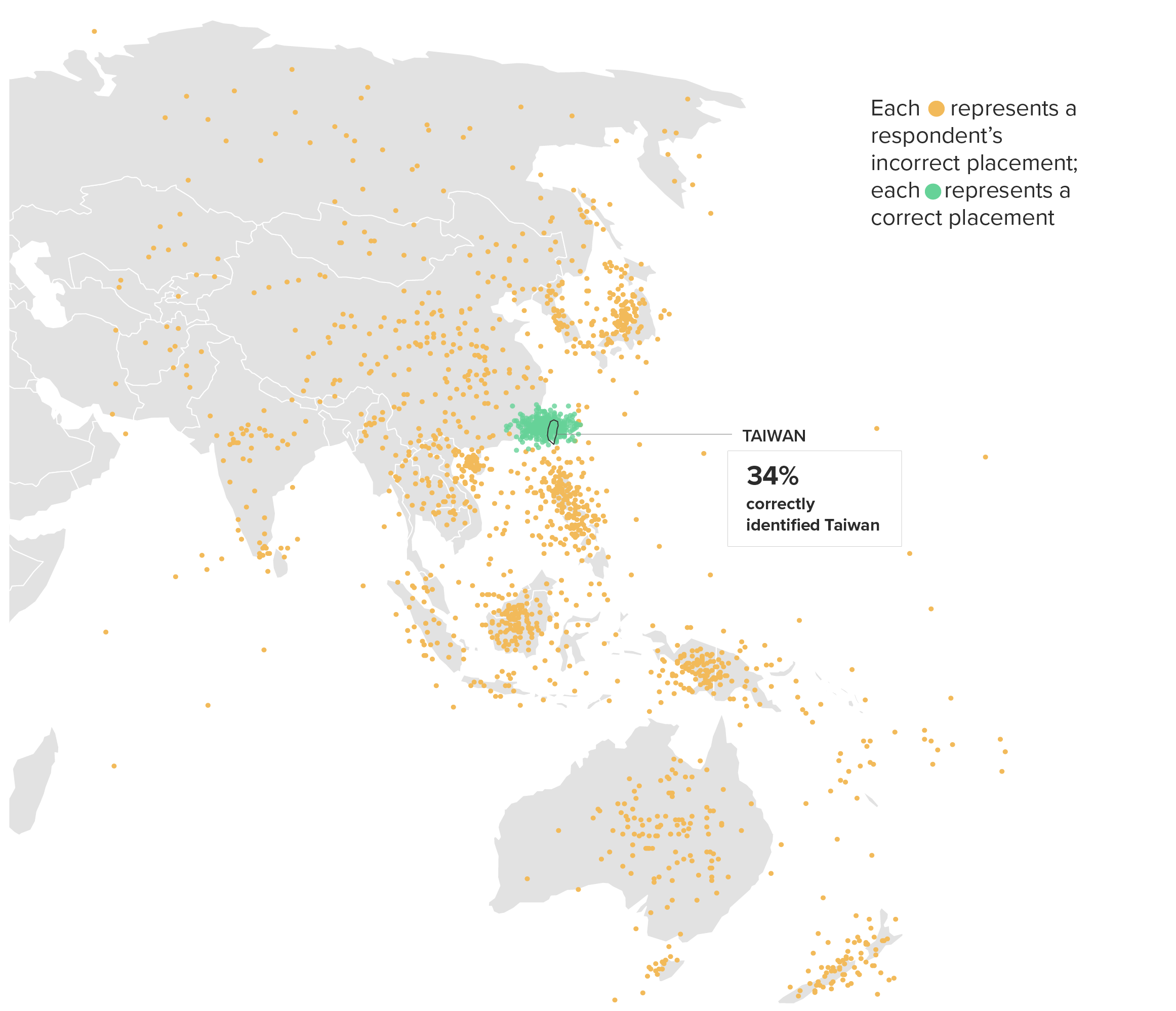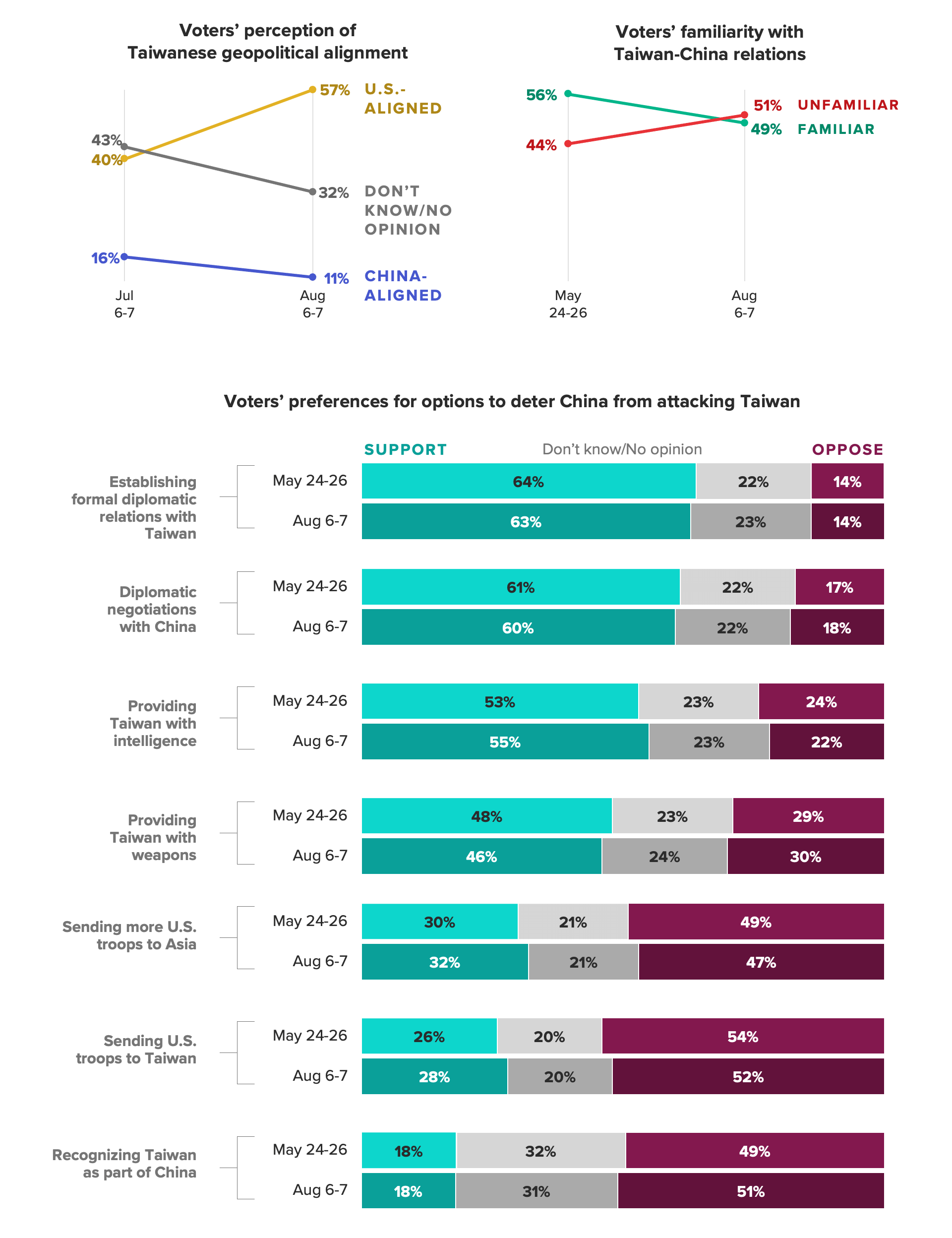34% of Voters Can Find Taiwan on a Map as Pelosi’s Visit Draws Attention to the Island’s Unique Situation
Thirty-four percent of voters heard a lot about House Speaker Nancy Pelosi’s visit to Taiwan, the same proportion that can find the island on a map, according to a new Morning Consult survey.

Voters struggle to find Taiwan on a map
- In an Aug. 6-7 survey experiment conducted during heavy media coverage of Pelosi’s trip to the island, 34% of U.S. voters could find Taiwan on a blank map of Asia. That’s the same as the share of voters who said they heard “a lot” about the California Democrat’s trip there last week. It’s also the same fraction of the electorate that could identify Ukraine on a map when asked a few weeks before Russia’s invasion of the country.
- Those who could identify Taiwan were more likely to have heard news coverage about the island recently, with 86% saying they had heard at least something about Pelosi’s trip — though the story did manage to break through to 71% of the general electorate.
- Those who could find Taiwan were also significantly more likely to have heard details of China’s retaliation, with more than three-quarters hearing about China’s missile launches as part of naval drills and dispatching of fighter jets across the middle of the Taiwan Strait, compared with 60% and 56% of all voters, respectively, for those developments.
Pelosi’s Taiwan visit highlights the complexity of cross-strait relations
Foreign visits by U.S. House speakers are usually uncontroversial affairs, and many American voters may have been taken aback by Beijing’s aggressive retaliation — but they also may just be finding out how much their high school history classes left out.
The United States allied with Chiang Kai-shek’s Republic of China to fight Japan during World War II, but U.S.-led efforts to form a postwar government of national unity between Chiang and Mao Zedong’s communists collapsed in 1947. Unwilling to be dragged into a war, Washington did not support Chiang, who retreated to Taiwan in 1949.
The United States recognized Chiang’s regime as the legitimate government of all of China for another 30 years, before switching recognition to Beijing in 1978. It has since continued providing weapons to Taiwan without calling it an ally — and keeping an ersatz embassy without calling it a country.
The view from Beijing, though, hasn’t changed: Taiwan is a rebellious province and therefore may be taken by force if necessary — but not yet. Washington and Beijing usually try not disturb this so-called “One China” policy, but when major U.S. dignitaries like Pelosi visit Taiwan, Beijing feels the need to demonstrate their position forcefully.
Post-Pelosi Visit, Voters Increasingly See Taiwan as U.S.-Aligned, but Are Less Likely to Understand Its Ties to China

Voters discover the ambiguity of strategic ambiguity
- The number of voters who say they are at least somewhat familiar with the China-Taiwan relationship fell from 56% to 49% between May and August, even as media coverage increased, suggesting some voters may be reassessing their geopolitical knowledge.
- The increased attention has led to much more accurate perceptions of Taiwan’s general geopolitical alignment, with the share of voters who see Taiwan as U.S.-aligned increasing from 40% in July to 57% in August.
- However, some nuances are not breaking through: 63% of voters support establishing formal diplomatic negotiations with Taiwan,which would amount to a formal recognition of its status and be seen as deeply provocative in Beijing.
- Voters who could find Taiwan on a map were even more hawkish than their less geographically literate peers, with 76% in support of official recognition of Taiwan and 56% saying the U.S. should be responsible for Taiwan’s protection even if Taiwan changed the status quo — contrary to longstanding U.S. policy — compared to 46% of all voters.
The Morning Consult survey was conducted Aug. 6-7, 2022, among a representative sample of 2,005 registered U.S. voters, with an unweighted margin of error of plus or minus 2 percentage points.
Matthew Kendrick previously worked at Morning Consult as a data reporter covering geopolitics and foreign affairs.